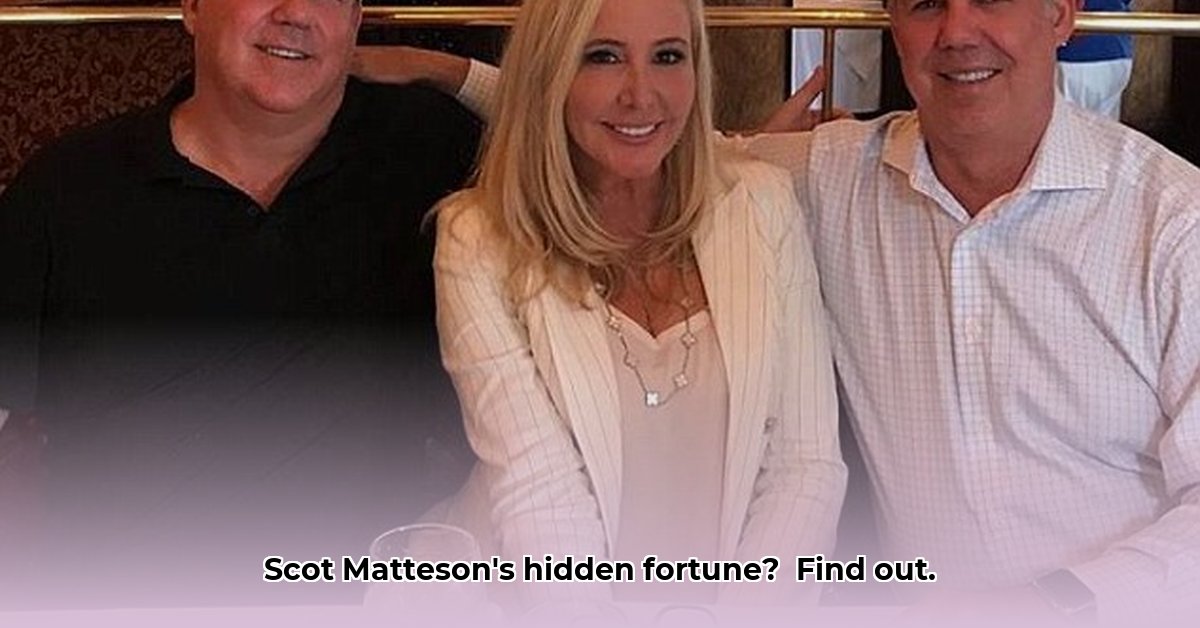
A Gigantic Gamble in the Sooner State
Oklahoma City is poised for a dramatic transformation, potentially adding the nation's tallest building to its skyline. At the helm of this ambitious project is Scot Matteson, whose proposed 1,907-foot skyscraper would boast 2.7 million square feet, encompassing nearly 2,000 apartments, a substantial hotel, and extensive retail space. This colossal undertaking, however, is shrouded in a significant degree of uncertainty. Is Oklahoma City’s growth trajectory truly capable of supporting such a massive development? The sheer scale of the project presents both its allure and its inherent risk.
Securing the necessary funding poses a considerable hurdle. Current high interest rates and the project's unprecedented magnitude understandably make potential investors hesitant. "It's a risky bet, to say the least," acknowledges Randy Hogan, a partner involved in the project, describing it as "aspirational." This statement, more suggestive of hope than certainty, highlights the significant financial challenges facing Matteson. The question remains: Will investors provide the capital needed to launch this massive undertaking? Given the current economic climate, the answer is far from certain.
The Man Behind the Curtain: Scot Matteson – Who Is He?
Information on Scot Matteson is surprisingly scarce. While he claims extensive experience in real estate, verifiable evidence of past successes is difficult to obtain. His companies, Matteson Capital and Centurion Partners, maintain a remarkably low online profile. This lack of transparency raises immediate concerns. Is this deliberate obfuscation, or simply a failure of public relations? The mystery surrounding his background significantly impacts investor confidence and makes assessing his net worth, a key factor in the viability of the project, virtually impossible. This opacity is a major red flag in a high-stakes venture involving billions of dollars in potential investment. A minor lawsuit further adds to the ambiguity surrounding his business practices, albeit a small one, fueling broader questions about his overall track record.
The Money Maze: Is This Project Even Feasible?
The central question—what is Scot Matteson's net worth?—remains unanswered. The lack of publicly available financial information prevents any reliable estimation. The project's feasibility hinges entirely on securing sufficient funding. However, will investors confidently commit to such a massive undertaking with a developer whose background and financial stability remain largely undisclosed? The answer will dictate not only the project’s future but also offer indirect insight into Matteson’s own financial situation. The success of this project will be a barometer of his financial acumen and ability to attract investment.
High Stakes, High Risk, High Reward (Maybe): A Calculated Gamble?
Matteson's Oklahoma City tower represents a considerable gamble. The potential payoff is enormous: a stunning architectural feat, a significant economic boost for the city, and a potentially substantial personal windfall for Matteson. However, the potential for failure is equally significant, encompassing substantial financial losses and considerable reputational damage. This exemplifies a classic high-risk, high-reward scenario.
High Stakes, High Risk, High Reward (Maybe): A Calculated Gamble?
This Oklahoma City tower represents an enormous gamble. The potential rewards are huge: a stunning new skyline, a boost to the local economy, and a potentially enormous payday for Matteson himself. But the potential for failure is just as substantial. We're talking about serious financial losses and considerable reputational damage. It's a classic case of high risk, high reward.
The Risks: A Closer Look
The project's success hinges on effectively mitigating these considerable risks:
| Risk Factor | Likelihood | Potential Impact |
|---|---|---|
| Securing Funding | High | Catastrophic |
| Matteson's Lack of Transparency | High | Significant |
| Market Demand Fluctuations | Medium | Moderate |
| Construction Delays | Medium | High |
| Regulatory Obstacles | Medium | Moderate |
Until Matteson and his team convincingly address these challenges, the project's future remains uncertain and steeped in intrigue. Only time will reveal whether this ambitious project will become a reality or remain a towering aspiration.
How to Verify the Credibility of a Real Estate Developer
Key Takeaways:
- Scot Matteson's project underscores the critical need for comprehensive due diligence when evaluating real estate developers.
- Verifying a developer's credibility demands scrutiny of legal standing, financial health, past performance, and reputation.
- Lack of transparency signifies potential risks and should raise serious concerns.
- Independent verification from multiple sources is essential for informed decision-making.
- Understanding local regulations and market conditions is pivotal for sound investment choices.
Unpacking the Matteson Mystery: A Case Study in Due Diligence
The lack of transparency surrounding Scot Matteson and his project highlights the paramount importance of thorough due diligence in real estate development. The ambitious scale of the project, coupled with the limited information about the developer himself, serves as a cautionary tale for investors.
Essential Steps for Verifying Developer Credibility
The Matteson case underscores the need for a comprehensive assessment process. This involves:
- Legal Compliance: Verify all necessary licenses and permits, checking for legal challenges or past violations.
- Financial Health: Examine financial records, debt-to-equity ratios, cash flow, and any potential red flags.
- Project Track Record: Assess the developer's completed projects, evaluating timelines, budgets, and construction quality.
- Reputation and Transparency: Investigate the developer's online presence and communication style, looking for signs of transparency or secrecy.
- Market Conditions and Local Regulations: Thoroughly understand local market conditions and ensure the project complies with all regulations.
Applying these steps to Matteson reveals considerable gaps in readily available information. The limited details about past projects and the absence of transparent financial data raise significant concerns. The project's massive reliance on external funding further amplifies these risks, making the overall viability of this endeavor highly questionable.